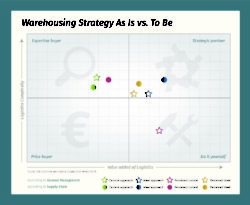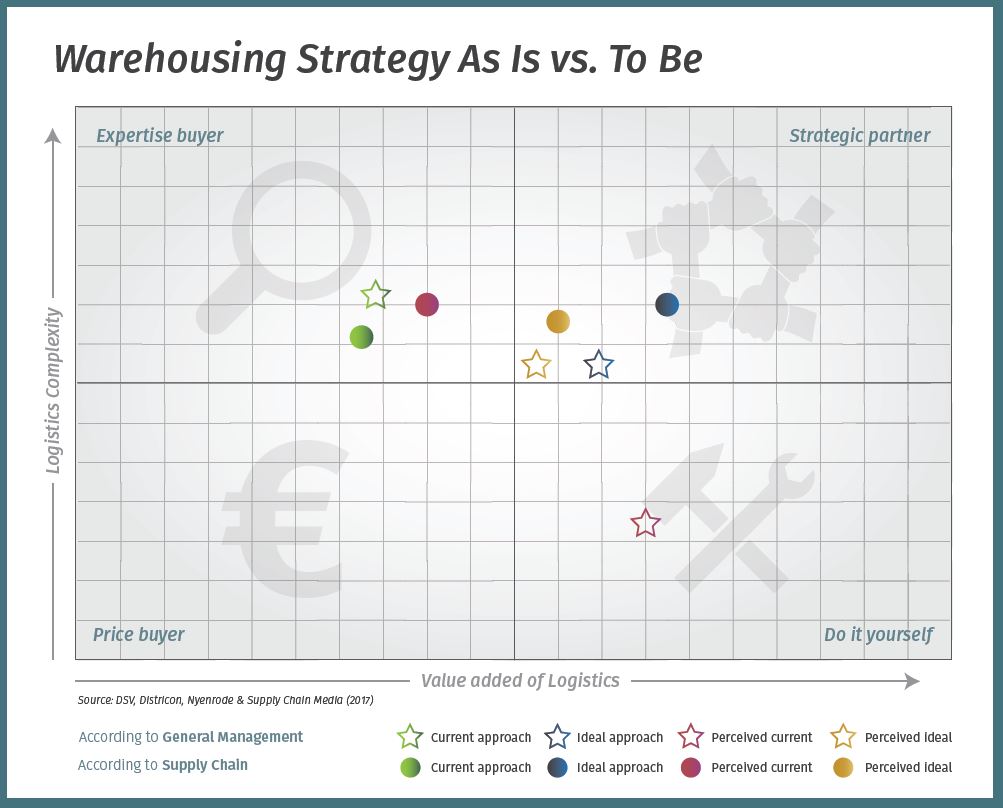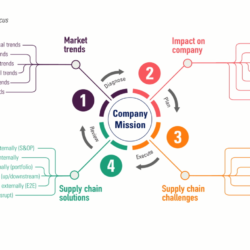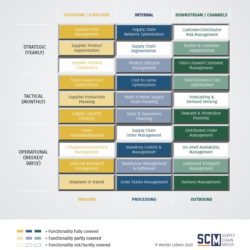General management underestimates the strategic value of logistics

Based on a three-year study and data from 450 senior supply chain professionals, and in partnership with Nyenrode Business Universiteit, Districon and DSV, Supply Chain Media has presented findings offering valuable insights into trends in logistics outsourcing strategies. Although most professionals recognize they should be focusing less on cost and more on adding value, they underestimate the potential of doing so, according to the anonymized data obtained from the Supply Chain Satellite, an online strategy-assessment tool.
According to the study, approximately 60% of respondents rate the status of the Supply Chain discipline as being equal to other roles like Finance or Sales, but only 12% think that supply chain plays a leading role and should be seen as a profit center. The research provides interesting insights into respondents’ perception of the added value of their supply chains. With the exception of the high-tech industry, all industries show significant gaps between the perceived ideal and the actual outsourcing ideal. Companies that are active in the automotive and consumer products industries show the largest discrepancy between the current and ideal position when it comes to their logistics outsourcing. The predominant approach in these industries is still largely focused on costs, whereas the product characteristics and market dynamics would in fact justify the supply chain discipline taking more of a leading role. In other words, overall the supply chain could be a more strategic source of value to organizations and their customers than is currently the case.
Underestimating complexity
Around 50% of respondents indicate they are either already outsourcing more strategic logistics processes like control towers or are currently considering the idea. Companies in the high-tech and healthcare sectors tend to have the most complex supply chains, which explains their greater requirement for strategic logistics partners rather than just service providers. Notably, however, general management consistently underestimates the complexity of supply chains.
“We’ve noticed that the value of supply chain management is often perceived differently by different disciplines within the same company.” says Martijn Lofvers, founder of Supply Chain Media. “By providing the Supply Chain Satellite tool, we aim to encourage discussion among the various business functions on this matter, acting as a kind of ‘mediator’ and ultimately stimulating the necessary innovation.”
The data collected in the study demonstrates that the retail sector is somewhat different from other sectors; it shows a clear trend towards retailers increasingly handling some of their logistics activities in-house. “We have seen this trend before,” says Jack Pool, Managing Director of Districon, a consulting firm that has a lot of experience in advising shippers on their logistics outsourcing strategy. “Companies outsource at first, but as their volumes grow and the operation stabilizes they turn to insourcing. An outstanding supply chain is a source of competitive advantage for retailers, including ecommerce companies, so that’s why giants like Amazon, Zalando and Bol.com keep most of it in-house.”
Realizing the potential
Jack van der Veen, Professor of Supply Chain Management at Nyenrode Business Universiteit, is encouraged by the research findings. “This proves that we are evolving the supply chain discipline to a more strategic level instead of merely execution. Companies are finally starting to realize the potential value the supply chain can deliver to the organization.”

About the Supply Chain Satellite
Many supply chain managers face the frequently recurring questions of which logistics functions they should outsource, and whether to focus on cost or value. Three years ago, to help them answer these questions, Supply Chain Media became part of an initiative together with Nyenrode Business Universiteit, DSV and Districon. The result was the Supply Chain Satellite, an interactive online strategic assessment tool which analyzes users’ responses and plots them on a matrix, with one axis showing the complexity of their supply chain and the other visualizing the extent to which their logistics operation adds value. The tool then compares the actual logistics outsourcing strategy to the ‘ideal’ situation. Since the launch of the tool, over 450 senior supply chain professionals have completed the extensive assessment. In addition to providing them with useful insights into their own as-is and ideal strategic approaches, this has also generated valuable information about how logistics outsourcing strategies are developing in general.
The results of the research can be seen on the interactive dashboard at www.supplychainsatellite.com/results. To complete the assessment, including free, detailed analysis of the results, go to www.supplychainsatellite.com.
Read the full article in Supply Chain Movement 26 | Q3 – 2017










